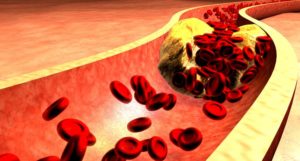 Although many of us know what to do in order to reduce our risk of heart disease, many of us still aren’t incorporating the lifestyle changes into our daily routines. This is why heart disease continues to be the number one killer in America.
Although many of us know what to do in order to reduce our risk of heart disease, many of us still aren’t incorporating the lifestyle changes into our daily routines. This is why heart disease continues to be the number one killer in America.
New research findings suggest that there may be a simple way to get patients to start implementing more heart-healthy practices into their lives, and it involves showing them what their arteries look like.
Advertisement
The study suggests that showing patients images of plaque buildup along their arteries creates greater adherence to lifestyle and medication interventions to reduce the risk of cardiovascular disease.
The randomized trial included over 3,500 individuals over the age of 40. All patients had at least one risk factor for heart disease, and all underwent blood sampling, a survey of clinical risk factors, and ultrasound assessment for carotid intima-media wall thickness and plaque formation.
Half of the patients were placed in a control group, who received cardiovascular disease screening along with prevention advice. The intervention group received pictorial representations of carotid arterial plaque.
The images revealed atherosclerosis using a color-coded representation of vascular age, revealing a patient’s actual age versus their biological age and how misaligned the two were. Short write-ups on how atherosclerosis can progress and what can be done to prevent it were also presented.
Patients received a follow-up call by a nurse two to four weeks after the scans and six months after the images were given.
Patients in the intervention group had lower totals after a year along with a reduction in heart disease risk factors, revealing that they implemented more preventative measures into their daily life to achieve lower cholesterol, which is a large contributing factor to heart disease.
Total and LDL cholesterol was seen to be reduced in both groups, but more so in the intervention group. Blood pressure and weight were also seen to slightly improve in the intervention group as well.
Advertisement
Lead author Ulf Näslund explained in a press release, “Cardiovascular disease is the leading cause of death in many countries, and despite a wealth of evidence about effective prevention methods from medication to lifestyle changes, adherence is low. Information alone rarely leads to behavior change and the recall of advice regarding exercise and diet is poorer than advice about medicines. Risk scores are widely used, but they might be too abstract, and therefore fail to stimulate appropriate behaviors. This trial shows the power of using personalized images of atherosclerosis as a tool to potentially prompt behavior change and reduce the risk of cardiovascular disease.”
The researchers concluded, “If clinical event rates are reduced in the follow-up studies, this simple intervention could easily be applied in general practice in other similar settings. Our study supports further attempts to solve the major problem of prevention failure because of low adherence, despite effective, cost-effective and evidence-based medications and methods for a healthier lifestyle.”
Also read:
- Yoga for heart health: Yoga poses to reduce the risk of heart disease
- 16 superfoods for a healthy heart
